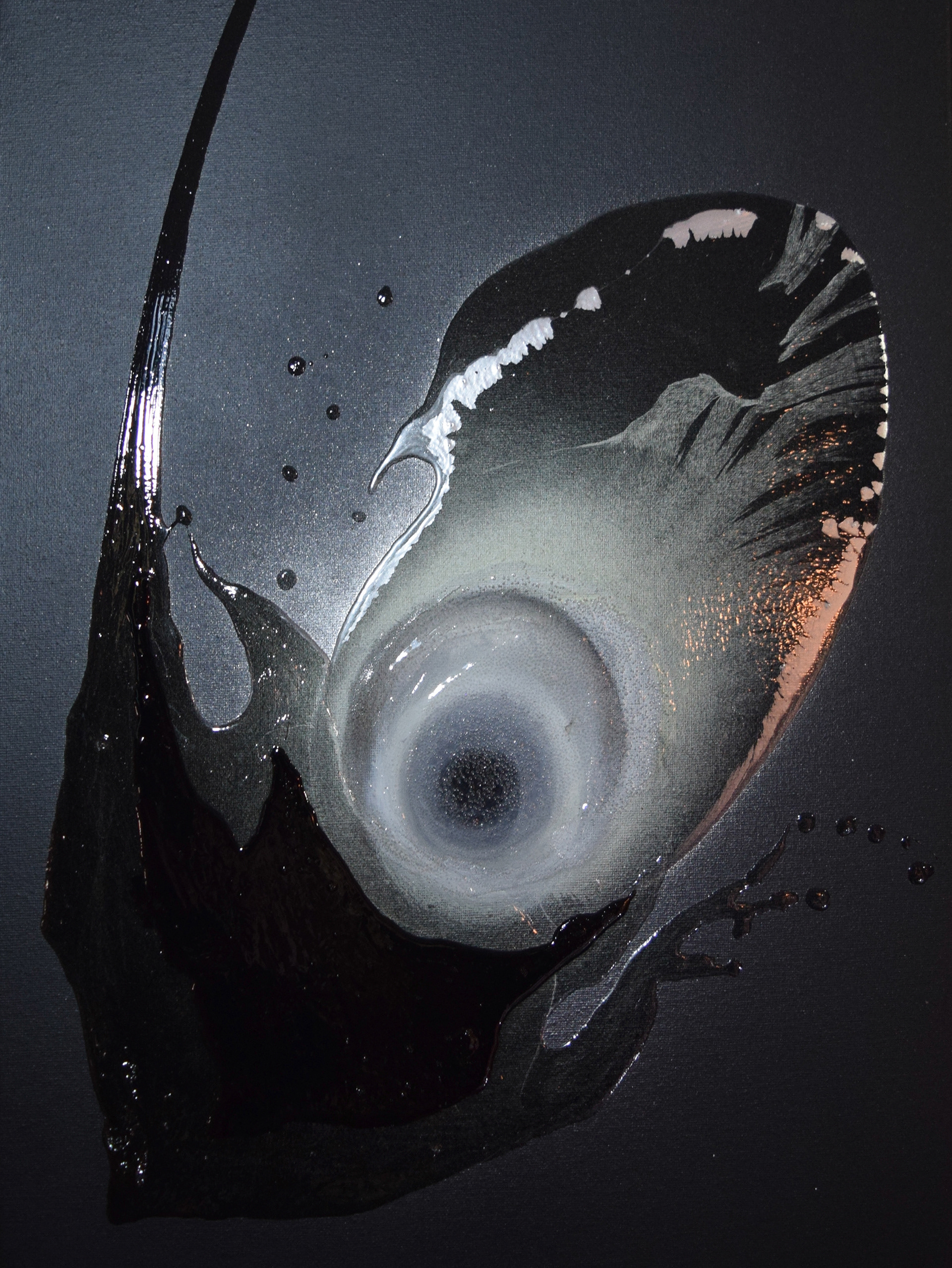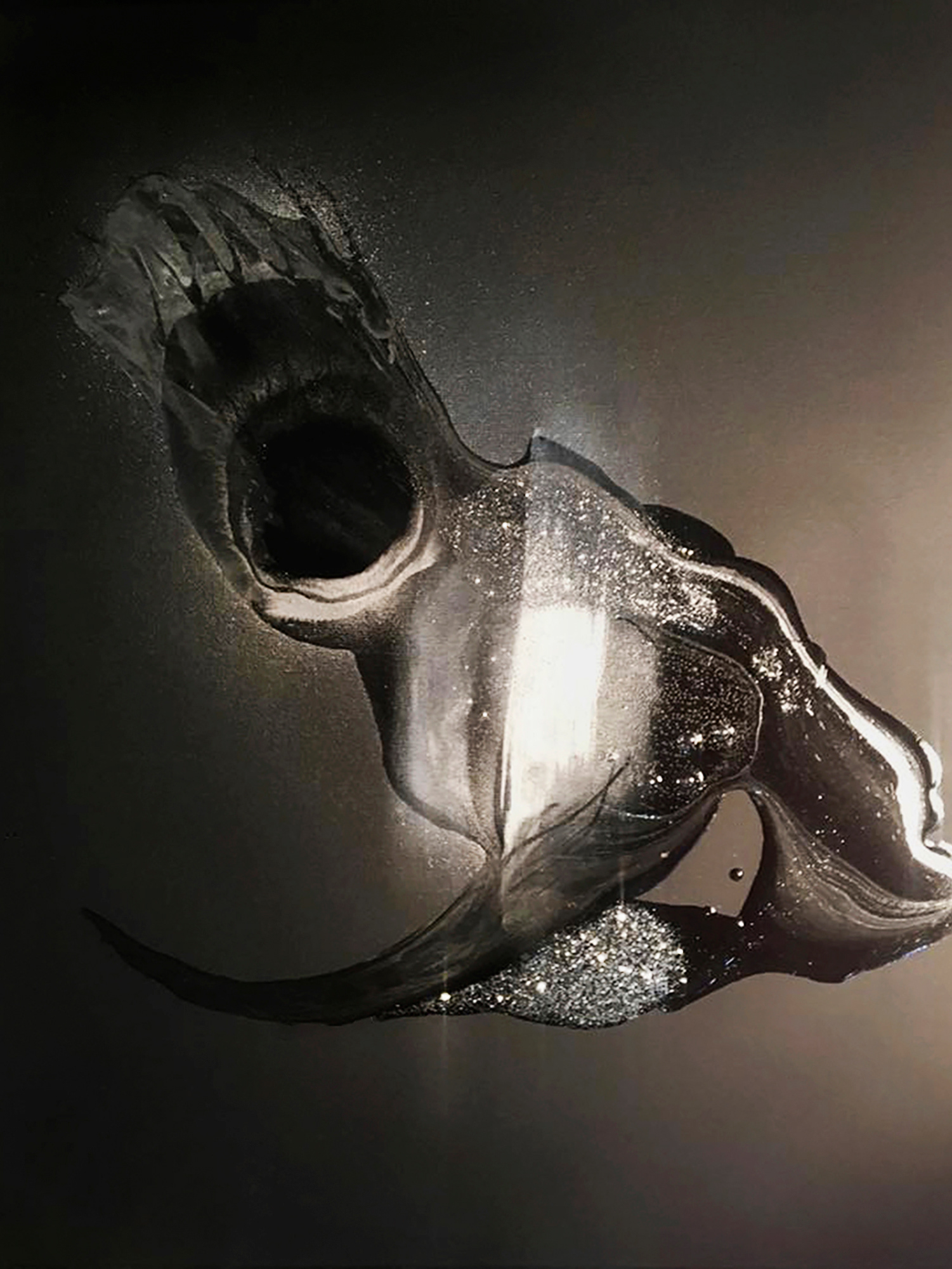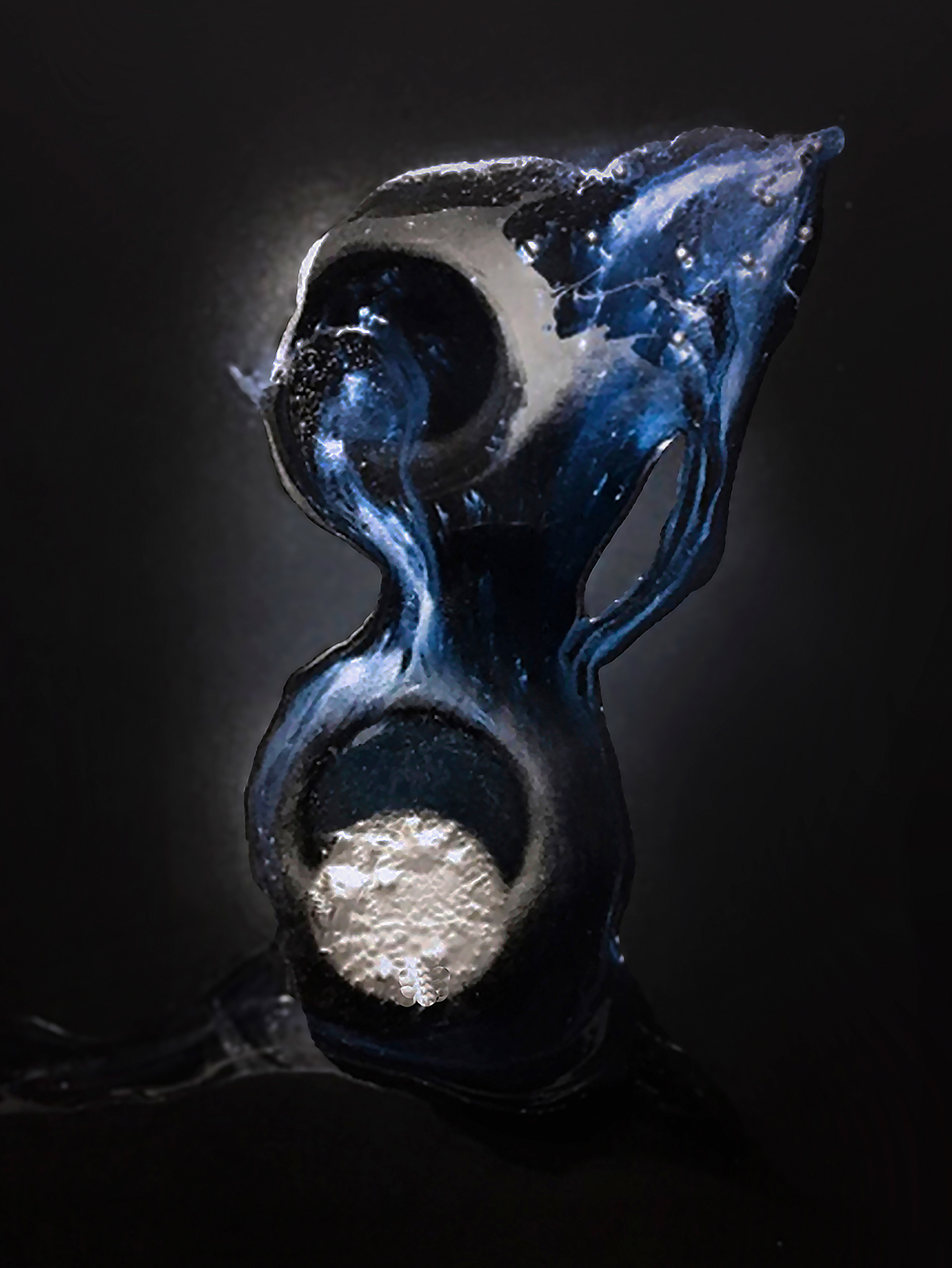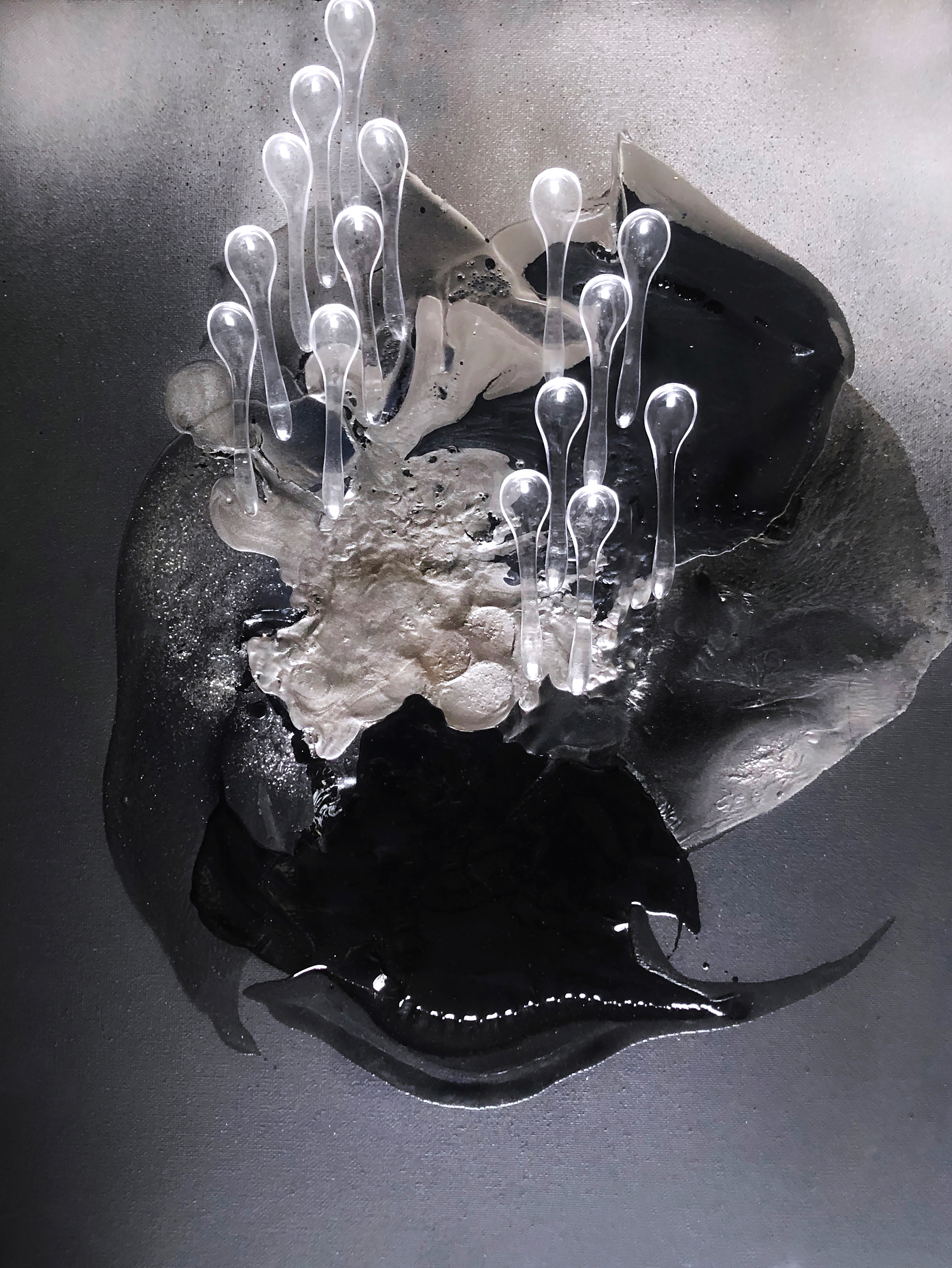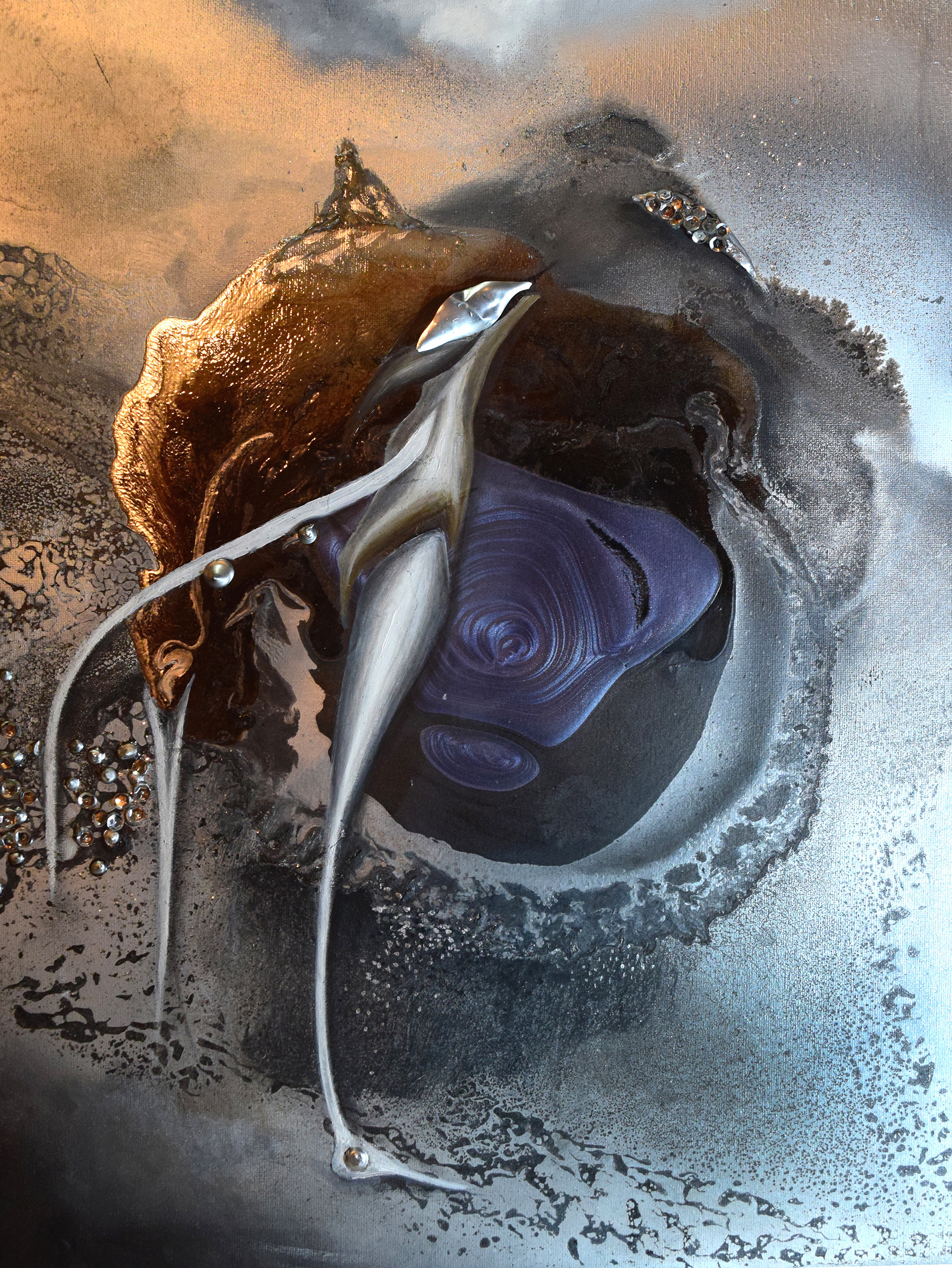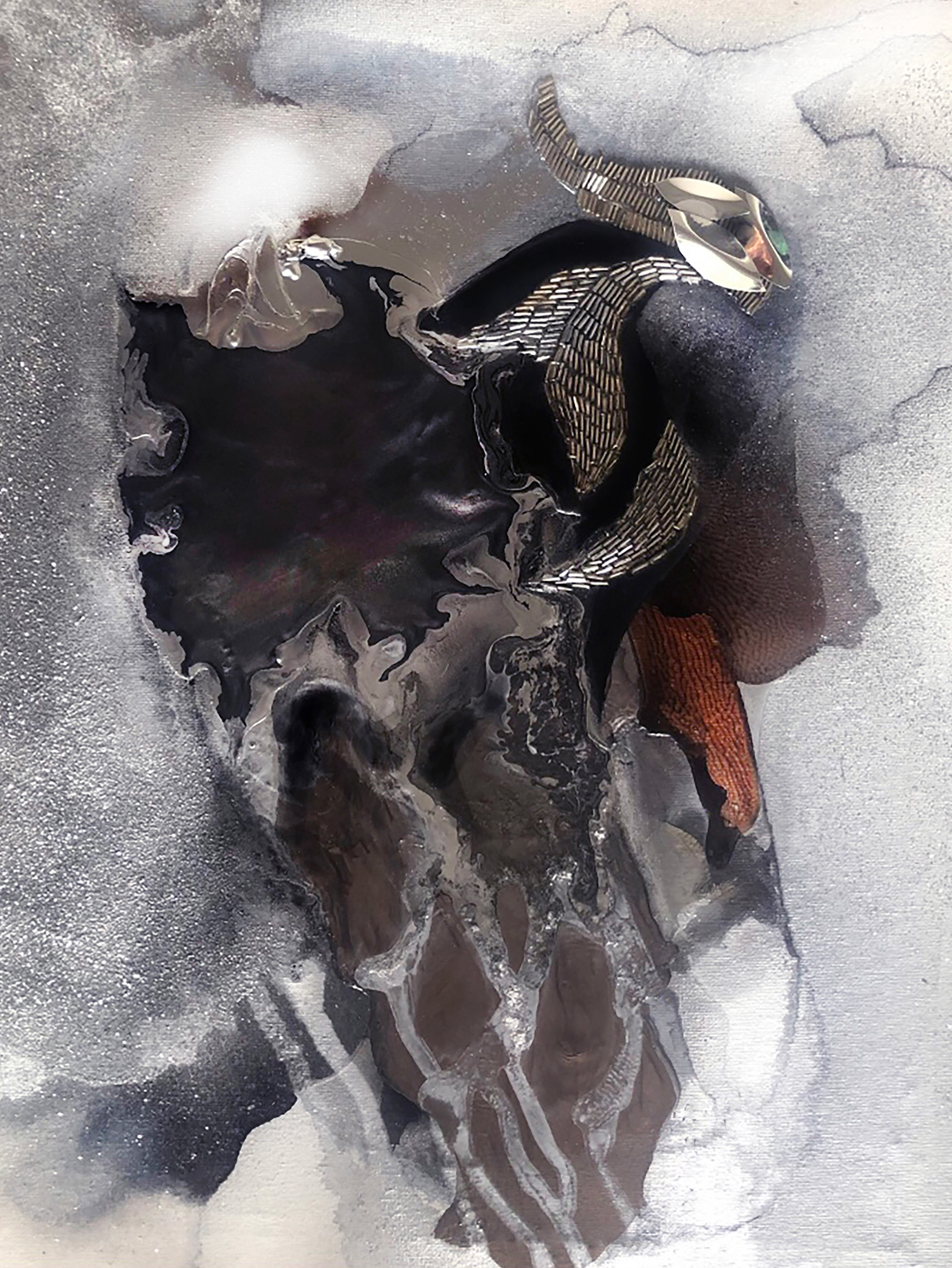PORTRAIT OF A LONER
Mix media on canvas. 40 X 50 CM. 2019 Collection: Game Changer Relic No. GCE-V.O011 Portrait of a Loner occupies a singular place within Shilowska Pretto’s evolving dimensional archive. Created during the Game Changer era, this transmission captures a rare psychological and aesthetic rupture: the exact moment when solitary consciousness begins to self-assemble in the void. The figure, rendered in stark white curves against a cosmic black field, floats untethered in what appears to be an infinite, pre-temporal space. Its anatomy is incomplete, spectral—a presence without organs, defined instead by tension, gesture, and the coil of encoded memory. Most striking is the striped core at its center, an embryonic symbol of what would later become The Gate in the Timeless Majesty era. Here, it functions not as a portal, but as a survival mechanism—a frequency filament, threading identity into being. Psychologically, the work evokes profound themes of isolation, emergence, and inner coding. The being is alone not by accident, but by design. It is a self-witnessing entity, forming around the ache of consciousness itself. There is no path here, no companion, only a murmur of structure forming in the dark—a reminder that the first transmissions do not seek an audience, only coherence. From an academic standpoint, this piece is of rare significance. It documents the early encoding of Shilowska’s visual grammar, with motifs (striping, dimensional curvature, anti-anthropocentric anatomy) that later become ritualized in her major works. As such, Portrait of a Loner is not an outlier but a pre-ritual relic, revealing the subconscious rehearsals behind what would later become the sovereign geometry of Dimensionalism. The work is made even more mythically potent by its physical uncertainty—its unknown whereabouts heighten its status as a lost transmission, one that still exists vibrationally even if its material body is unrecoverable. In this way, it echoes the very theme it embodies: loneliness as origin, presence without place. CURATORIAL COMMENTARY by Dong-hyun Yoon Archive for Trans-Contextual Inquiry, ATI Seoul/Berlin.
